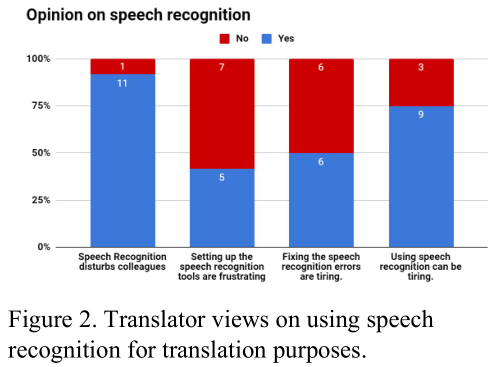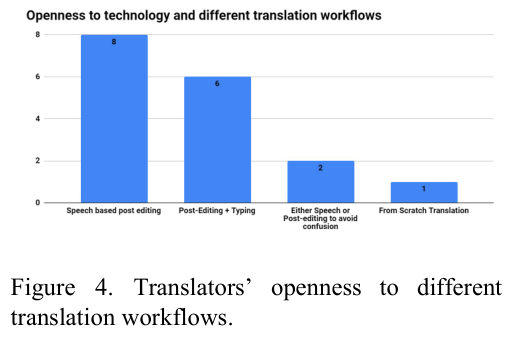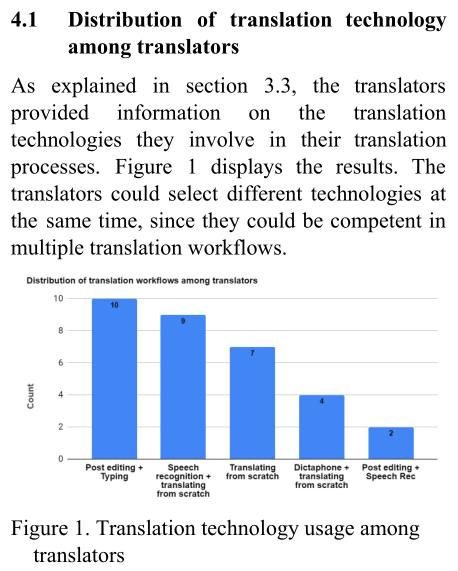 |
 |
 |
 |
| MT reshaping the language industry |
| 07 | Technology usage among translators | |
|---|---|---|
|
The main aim of this survey was to identify how feasible it is to implement new post-editing workflows in an international organization using speech as an input method to edit inaccurate machine translation outputs.
3.2 Participants profile This study involved five large scale international organizations based in Geneva and one large scale international organization based in Luxembourg. 17 participants were selected from these six organizations using snowball sampling. The selected group included 11 females and 6 males, belonging to different age groups (3 translators between ages 20-35, 8 between 36-50, and 6 older than 50). |

|
|
|
Appendix C. Tool Usage in organizations
Category Details CAT tools used: Eluna, SDL Trados and Multitrans, DtSearch, MultiTerm, Groupshare, Euramis, memoQ, SmartLing. MT tools WipoTranslate, DeepL, eTranslate Usage of dictaphone 2 organizations out of 5. One out of those two uses the dictaphone very rarely. Speech recognition usage (e.g. Dragon) 4 organizations out of 5 use speech recognition. Machine translation usage 4 organizations out of 5 use machine translation. Post-editing using typing 4 organizations out of 5 use post-editing using typing. Post-editing using speech Only one translator of one organization could be found using post-editing using speech. |

|
|
|
4.1 Distribution of translation technology among translators As explained in section 3.3, the translators provided information on the translation technologies they involve in their translation processes. Figure 1 displays the results. The translators could select different technologies at the same time, since they could be competent in multiple translation workflows. Figure 1. Translation technology usage among translators |

|